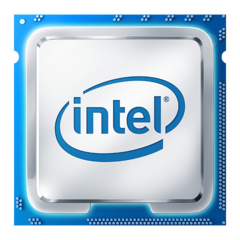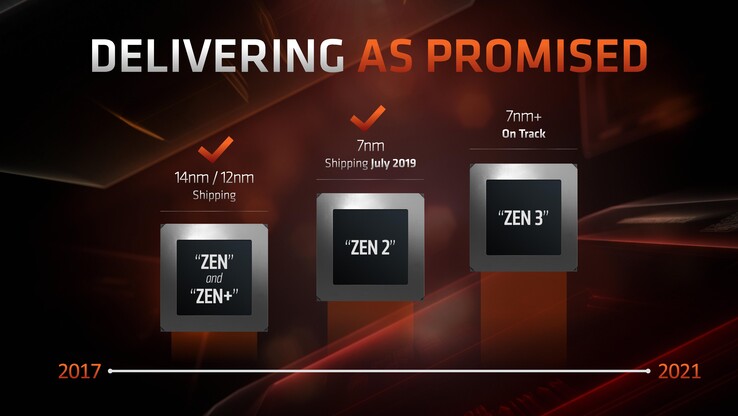How Intel can get back on top

The rumours of Intel’s demise are greatly exaggerated. The manufacturing setbacks with 10-nm and 7-nm lithography do not have to be the end of Intel for the company still has one last trump up its sleeve, namely the monolithic design, and it can get Intel back on top, even if it is falling further and further behind in terms of its manufacturing capabilities.
I have been closely following the Intel saga for a number of years now, and lately it has taken a wholly unexpected turn, what with Intel delaying the rollout of its 7-nm chips and even going as far as to consider outsourcing manufacturing to third-party foundries. Some in the technology space took this move by Intel to mean the end of an era of American dominance in the semiconductor realm, but is that truly so? Is there no way for Intel to get back on top without making any advances in manufacturing technology in the next two years? I would argue that there is, but let me explain why. The key to success lies in Intel’s monolithic design.
AMD’s approach allows it to maximise its yields in the following way: If one or two cores in a central processing unit are defective, then they can be disabled, turning what was once a defective octa-core chip into a fully functional hexa-core processor. The silicon is not lost even if four of eight cores are defective, because in that case what you would get is a quad-core CPU.
All of this is not to say that AMD makes no monolithic chips itself, because it does. The recently announced low-TDP 4000-series APUs from AMD feature a fully monolithic design. However, I do not think that AMD is going to take it beyond eight cores anytime soon, because what I believe AMD is doing here is capitalising on the work it has done building the central processing units for the next-generation consoles such as the PS5 and the Xbox Series X. Both of these consoles are going to be powered by an octa-core Zen 2 CPU.
We have already seen what these monolithic chips from AMD are capable of in the ASUS ROG Zephyrus G14, which comes with the octa-core Ryzen 7 4800HS. But the Ryzen 7 4800HS is still a mobile processor, which is why it falls significantly behind the desktop Ryzen 7 3700X and Intel’s Core i7-10700K in the productivity benchmarks such as Cinebench R20 (FYI: the Ryzen 7 4800HS scores on average 3850 points in Cinebench R20 while the Ryzen 7 3700X scores 4782 points and the Core i7-10700K scores 4950 points).
But here is where things get hairy for AMD and its chiplet design: AMD’s top-of-the-line dodeca-core processor (Ryzen 9 3900X) offers roughly the same level of performance as its quad-core chip (Ryzen 3 3300X) in certain titles. The Ryzen 9 3900X is thoroughly beaten by the cheaper Core i5-10600K in almost every modern game. Of course, the Ryzen 9 3900X is still vastly superior in productivity applications, but what if we were to imagine a scenario in which the performance gap in professional workloads was much smaller. What if the successor of the Core i5-10600K offered eight cores instead of six at the same price point? I believe that would fundamentally shift the value proposition not only here but throughout the entire product stack, if Intel were to increase the core count by two across its entire mainstream product line. That would mean that the bottom-of-the-barrel Core i3 would now have 6 cores and 12 threads and therefore would consistently outperform AMD’s best in video games, and that would not be a pretty look for AMD however you slice it. Better yet, Intel should release a bargain-bin hexa-core Pentium processor, which would be able to keep up with AMD’s best in video games, thus revealing for the whole world to see the true flaws of the chiplet design.
In one of his recent videos, Steven Walton from Hardware Unboxed remarked that there would have been a bloodbath
in the gaming benchmarks if AMD’s 2000-series desktop chips were to go up against Intel’s 10000-series desktop processors. While AMD has clearly made a lot of progress with its 3000-series desktop CPUs, the Ryzen processors still fall behind in the gaming benchmarks despite the fact that many current-generation titles become GPU-limited even at 1080p.
With the arrival of the 3000-series Nvidia GPUs later this year, the gaming performance gap is set to widen even further between top-of-the-line 10000 series parts from Intel and 3000-series AMD chips. According to educated rumours, the best we can expect from AMD’s upcoming Zen 3 chips is an 8% to 10% increase in IPC performance, which would probably be just enough to offset the boost in IPC performance that is likely to come from Intel’s new Rocket Lake-S architecture. Nevertheless, there could still be a veritable bloodbath
in the gaming benchmarks with Rocket Lake-S if Intel plays its cards right.
So how can Intel play its cards right? By winning the core-count game in the mainstream space. If Intel’s Core i3 chips offer the same amount of cores as AMD’s Ryzen i5 CPUs, then AMD’s chips will not stand a chance in the gaming benchmarks, especially if Intel is able to deliver any IPC gains with Rocket Lake-S. Much seems to be going Intel’s way with Rocket Lake-S. The release of new much more powerful GPUs is around the corner and the release of next-generation consoles with octa-core CPUs is likely to force large hordes of PC gamers to think long and hard about finally upgrading their CPU, and this is where Intel should come in with the following product line-up: Intel Core i3-11100 (6 cores; 12 threads), Intel Core i5-11600K (8 cores; 16 threads), Core i7-11700K (10 cores; 20 threads)…and as far as the Core i9 series goes, in my somewhat karmic view, if Intel cannot make a monolithic 12-core/24-thread 14-nm chip, then the company does not deserve to have a Core i9 SKU at all. If Intel is not be able to make a 10-core/20-thread Rocket Lake-S chip, then it should just rename the current Comet Lake-S-based Core i9-10900K as the Core i7-11700K and drop its price to US$350.
The lack of a Core i9 SKU would be Intel’s badge of shame to wear in the Rocket Lake-S generation, but that would, in no way, shape or form, make the rest of Intel’s mainstream line-up any less beastly
. As Stephen Burke from GamersNexus and Steven Walton from Hardware Unboxed recently remarked Intel’s top-of-the-line Core i9-10900K is a beast
, and in my view the Rocket Lake-S hexa-core i3, Rocket Lake-S octa-core i5 and a better-binned Comet Lake-S deca-core i7 would also be quite “beastly”. Granted, this is not the most graceful solution, but this is the best Intel can do, considering the circumstances.
The next great CPU upgrade cycle in the enthusiast space is nigh and Intel needs to unleash the beasts
on AMD if it is to ever regain its former glory. There is no reason why Intel could not do that, after all, according to Internet gossip, Intel once said that its main competitive advantage against AMD was its pile of cash. Well, the time has come for Intel to put that rumoured pile of cash to good use with the 11000 series by selling chips at a loss if that is what it takes.






